Showing 25 of 751 items meeting your criteria.
| | Type | Category | Supplier | |
|---|
| |
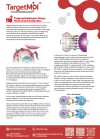 | Description: TargetMol® can provide you with all kinds of monoclonal antibodies, including various immune checkpoint inhibitors and other types of targeted monoclonal antibodies to meet your experimental needs. |
Documents | Antibodies | TargetMol | |
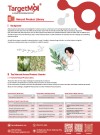 | A broad and diverse herbal source is an important guarantee for a high-quality Natural Product Library. TargetMol has collected massive relevant information of nearly 10,000 natural product monomers and numerous plants in 196 families, 887 genera. We can be a great help for you to search your desired compounds according to plant classifications. |
Documents | Small Molecules | TargetMol | |
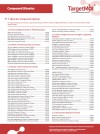 | List of compound libraries available with TargetMol |
Documents | Small Molecules | TargetMol | |
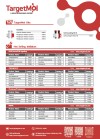 | See the most popular inhibitors by TargetMol on the following areas:
- mTOr signalling
- Angiogenesis
- Proteases
- MAPK
- Stem cells
- Ubiquitination
- Cell cycle/checkpoint
- DNA damage/repair
- Microbiology and virology
- Apoptosis
- NK-Kb
- GPCR/G Protein |
Documents | Small Molecules | TargetMol | |
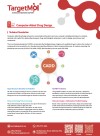 | |
Documents | | TargetMol | |
 | Most popular inhibitors by TargetMol:
- PI3K/Akt/mTOR signaling
- Angiogenesis
- Proteases/Proteasome
- MAPK
- Stem Cells
- Ubiquitination
- Cell Cycle/Checkpoint
- DNA Damage/DNA Repair
- Microbiology and Virology
- Apoptosis
- NF-kb
- GPCR/G Protein
|
Documents | Small Molecules | TargetMol | |
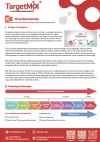 | Drug repurposing, also known as the new use of old drugs, is a strategic approach to discover new applications for old or investigational drugs beyond their original approved applications. While the development of new drugs is a process with a high failure rate, high cost, and slow pace, repositioning old drugs for common and rare diseases is becoming increasingly attractive because of the advantages of low R&D costs and short development time.
|
Documents | Small Molecules | TargetMol | |
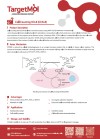 | Cell Counting Kit-8 allows convenient assays using WST-8, which produces a water-soluble formazan dye upon reduction in the presence of an electron carrier, 1-Methoxy PMS. |
Documents | Cell Based Assays | TargetMol | |
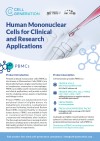 | Primary PBMCs from Cell Generation are isolated directly from peripheral blood of eligible donors via leukapheresis procedure. Leukapheresis performed following Institutional Review Board (IRB) consented healthy or diseased human donors. |
Documents | Biological Samples | Cell Generation | |
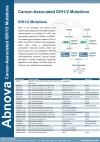 | IDH1/2 Mutations |
Documents | Cancer | Abnova Corporation | |
 | Androgen receptor (AR) is a member of the steroid receptor transcription factor family. In prostate cancer, increased levels of androgens in the tumor cells promote (1) AR signaling associated with cell-cycle regulation, growth, and survival, and (2) the expression of oncogenic fusion genes. AR-V7 is one of the splice variants of AR lacking the C-terminal LBD,
but being constitutively active as a transcription factor and capable of promoting activation of target genes. |
Documents | Cancer | Abnova Corporation | |
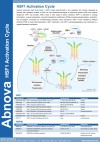 | Inactive monomeric heat shock factor 1 (HSF1) exists predominantly in the cytoplasm and remains repressed by complex with regulatory proteins of HSF1 its own transcriptional targets of heat-shock protein (HSP) and cytosolic chaperonin TCP1 ring complex (TRiC). Upon a wide range of stress conditions, HSF1 is activated to undergo trimerization, nuclear translocation, and post-translational modifications (PTMs) including phosphorylation, acetylation, and sumoylation, converted into a DNA-binding-competent, active homotrimer. HSF1 is then modified by different inhibitory PTMs to cause DNA dissociation, HSF1 inactivation, and HSF1 recycling/degradation and maintained in a negative-feedback mechanism. |
Documents | Antibodies | Abnova Corporation | |
 | High IF Literature in October, 2022 |
Documents | Flow Cytometry | Elabscience | |
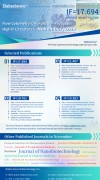 | High IF Literature in November, 2022. |
Documents | Flow Cytometry | Elabscience | |
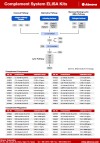 | Complement System ELISA Kits - Complement Components, Complement Regulators, Complement Receptors and Complement Lectin Pathway Targets from Abnova. |
Documents | ELISA | Abnova Corporation | |
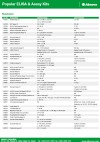 | Popular ELISA & Assay Kits |
Documents | Kits | Abnova Corporation | |
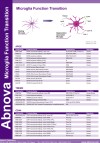 | Microglia Function Transition. |
Documents | Antibodies | Abnova Corporation | |
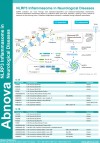 | NLRP3 activation can occur through both potassium-dependent and potassium-independent mechanisms. Potassium-dependent mechanisms depend on potassium efflux upon MLKL activation, opening of P2X7 channel or exposure to pore-forming toxins. Potassium-independent activation is mediated through metabolic perturbation. |
Documents | Inflammation | Abnova Corporation | |
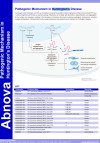 | Full-length mutant huntingtin (mHTT) can be further processed to generate smaller fragments and the amino-terminal HTT exon1 protein fragments are formed by aberrant splicing. Fragments can undergo self-association, oligomerization, and aggregation in the nucleus and cytoplasm, leading to the formation of inclusions that cause numerous pathogenic mechanisms, including synaptic dysregulation, mitochondrial toxicity, energy imbalance, and impaired axonal transport in Huntington’s disease. |
Documents | Antibodies | Abnova Corporation | |
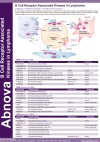 | Inhibition of BAK Activation in the Microenvironment. B cell receptor associated kinases (BAKs) are expressed in not only B cells but also other cell types, and regulate the signaling of other surface receptors within the tumor microenvironment (TME). Evidence has suggested that BAK inhibitors could disrupt the crosstalk between malignant B cells and their microenvironment by suppressing the function of BAKs in those non-tumor cells. |
Documents | Kinase | Abnova Corporation | |
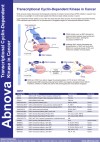 | While several studies discovered the therapeutic potential of receptor tyrosine kinase (RTK) inhibition, research has recently put a spotlight on novel kinase targets that influence basal cellular process in cancer. Cyclin-dependent kinase (CDK) is one of the new areas that has been focused. As transcription-associated kinases, CDKs represent opportunities for the development of druggable targets for transcriptional-addicted cancers. |
Documents | Kinase | Abnova Corporation | |
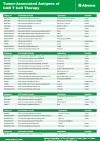 | Tumor-Associated Antigens of CAR T Cell Therapy |
Documents | Antibodies | Abnova Corporation | |
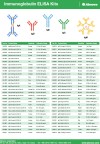 | Immunoglobulin ELISA Kits |
Documents | ELISA | Abnova Corporation | |
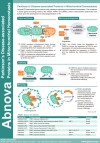 | Several PD-associated genes interact with pathways regulating mitochondrial homeostasis. The mutations in these genes encoding proteins, like VPS35, PINK1 and LRRK2, lead to mitochondrial dysfunction and further drive the development of neurodegeneration in PD. |
Documents | Proteins | Abnova Corporation | |
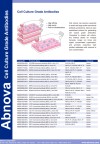 | Cell culture has become essential to small and large scale monoclonal antibody productions. Abnova uses a specialized protocol for generating cell culture grade antibodies. Compared to classic cell culture, this method allows for multiple harvests, longer run times and higher concentrated supernatant, and provides customers high purified antibodies with minimal to zero contamination. |
Documents | Antibodies | Abnova Corporation | |